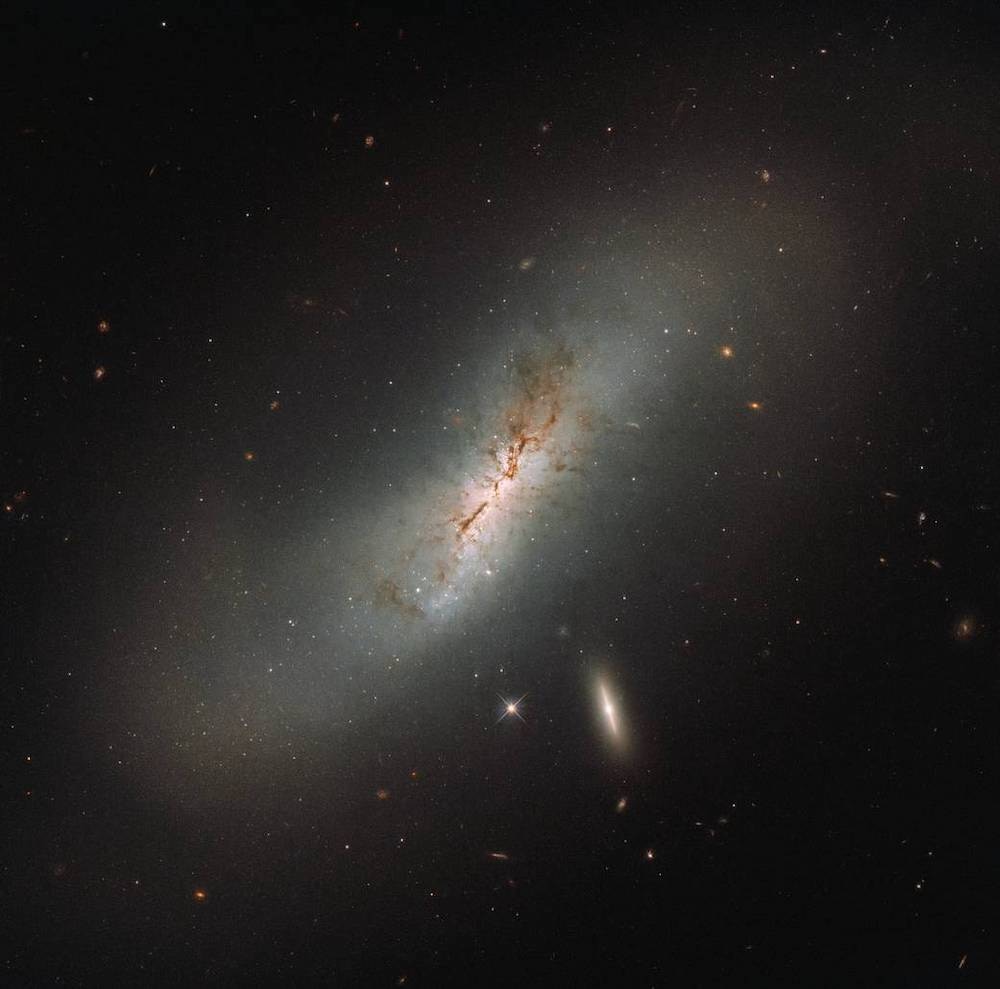Create a free profile to get unlimited access to exclusive videos, sweepstakes, and more!
How two galaxies got the gift of a black hole
So that's how some galaxies got their black holes...

It sounds like a Star Wars spin-off. There was a galaxy, far, far away (of course) that had no black hole. It only obtained one by forming an alliance with another galaxy.
Whether there are any aliens or starships in NGC 4424, a spiral galaxy in the Virgo constellation, is thought to once have been devoid of its own black hole. How some spiral galaxies even got their black holes has remained a mystery until now. However, new research suggests that NGC 4424 was the result of a merger with a much smaller, spherical galaxy, and this galaxy had something dark and powerful in its possession. Enter the black hole.
Galaxies that are larger tend to overpower smaller ones with their gravitational pull, kind of like how a vast kingdom in fantasy or sci-fi can easily send its armies to capture smaller kingdoms and integrate them into an ever-growing empire. Some of these smaller kingdoms have riches the larger one may be after. There are those which can’t be taken without a fight, and then there are those which instead decide to share their riches and form an alliance.
“It was known that NGC 4424 had experienced a significant event in the past, presumed to be a collision with a smaller, previously undetected, galaxy,” astrophyiscist Alister Graham, who led a study recently published in The Astrophysical Journal, told SYFY WIRE. “It eventually became apparent that we had found the source of the remnant nucleus, the heart, of an infalling galaxy."
Graham and his research team analyzed X-ray observations from the Chandra X-ray Observatory along with visible observations from Hubble. Something that made them suspicious when looking at the X-ray data was the hotspot near the center, but not exactly at the center, of NGC 4424. Hotspots like this — scorching gas surrounding a galaxy’s black hole — are usually found right in the centers of most larger galaxies. Visible light eyed by Hubble factored into modeling and calculations that then revealed a star cluster reaching towards the center of NGC 4424.
The observations showed the team that they were looking at what remained of the heart of a spherical dwarf galaxy. Finding the black hole in there meant detecting its emissions. Sometimes these can be elusive in a less active black hole, but the emissions from this one were bright and easily detectable, since they were high-energy X-ray photons. It was an ancient story of a spherical dwarf galaxy that succumbed to the gravitational pull of the more massive NGC 4424, which pulled in the galaxy with its glittering array of stars and, deep within them, a black hole.
“These stellar jewel boxes are so tightly bound that they can survive while their host galaxy evaporates around them upon entry into and merging with a larger galaxy,” Graham said. “Furthermore, astronomers had previously discovered that these star clusters usually harbor a massive black hole.”
Galaxy mergers happen all the time. The Milky Way has conquered several smaller galaxies in its past, but the phenomenon of a larger galaxy pulling in a smaller galaxy with a massive enough black hole had never been seen before. Black holes like this can be brought to the center of a galaxy that is still growing, just like precious gifts being brought to the high kingdom of a galactic empire. It is predicted that the NGC 4424 black hole will eventually sink to the actual center of the galaxy, and it is possible that future mergers could create a supermassive black hole.
This is not science fiction. Black holes floating around a large galaxy may eventually come to merge with its nuclear black hole, possibly making an intermediate-mass one into a supermassive, and one that is already supermassive into a cosmic beast. Upcoming gravitational wave detectors like LISA (Laser Interferometer Space Antenna) will be able to observe emissions from such hypothetical events in more detail, including the masses of merging black holes.
“This is a viable scenario, which means that there may be massive black holes in our galaxy that are yet to merge with the 4 million-solar-mass black hole at our galaxy's center,” said Graham. “Such a collision would launch a strong series of gravitational waves across the galaxy.”
If there really was a united galactic empire of humans and aliens in a galaxy with merging black holes, so much energy would be generated that Graham remarked “they may want to hold on to their beer.” So much for the Mos Eisley Cantina.


























